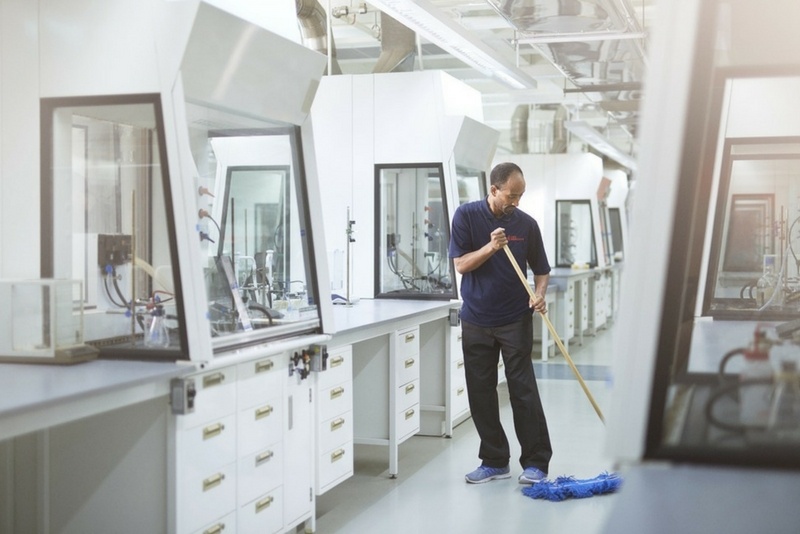According to the U.S. Bureau of Labor Statistics, there were 34,860 workplace slip-and-fall injuries involving ice, sleet, or snow in 2014 that required at least one day away from work. That same year, the average winter slip-and-fall claim cost around $44,000.
Given these figures, it’s important that you and the rest of your team identify the slip/fall hazards of tasks and take precautions this winter to avoid injury. Below is a list of tips to prevent slips and falls that are based on the Hierarchy of Safety Controls (Elimination, Engineering Controls, Administrative Controls & PPE).
1. Eliminate hazardous tasks when possible
Begin by identifying the tasks at your facility that require an employee to walk across a snowy or icy surface. Then consider if any of those tasks could be revised or automated to reduce the frequency of the task (or eliminate the task entirely). For example, in the past, utility companies sent meter readers to homes each month to read electric and water meters. This task had a high risk of injury, as it required employees to walk across potentially hazardous surfaces. Technology has now reduced or eliminated the need for this task and, as a result, the incident rate for this work-group has fallen.
2. Use engineering controls to reduce the hazard
If the act of walking on a slippery surface cannot be eliminated, then try to make the surface less slippery. This can be achieved through actions like making sure the parking lot is plowed, sanded, and salted; ensuring that obstacles such as parking barriers, curbs, and storm drains are clearly visible; and by encouraging employees to walk on clear, well-maintained paths. Additionally, employees should be coached on the importance of immediately reporting all slippery surfaces to a supervisor or maintenance person, so steps can be taken to reduce the hazard.
3. Use administrative controls, such as safety training, to improve awareness and skill
If you walk on a slippery surface with your normal gait, you are at a higher risk of slipping and falling. To stay safe, try walking like a penguin, taking short slow flat-footed steps. You should also keep your hands out of your pockets and use your arms for extra balance. When it comes to stepping off of curbs or getting out of a car, it’s much better to step down onto the ground than to step outward. Additionally, you should never use your cell phone or carry a large or heavy load while walking across a slippery surface.
4. Use PPE (Personal Protective Equipment) to help control exposure to slips/falls
Encourage employees to wear footwear that provides adequate traction when traversing a slippery surface. Some options include winter boots, lugged soles, and slip-resistant soles. Traction enhancing devices that attach to the bottom of footwear are also a good option, but make sure to remove the traction devices before entering a building, as they can increase your chances of slipping and falling on hard surfaces—like tile, granite, or marble—and may damage the floor.
At C&W Services we’re committed to establishing a culture of safety and excellence at all our client sites.
Read more about how we’re providing customized and creative facility management solutions.
Let’s connect about how we can raise the value of facilities services for your company.






